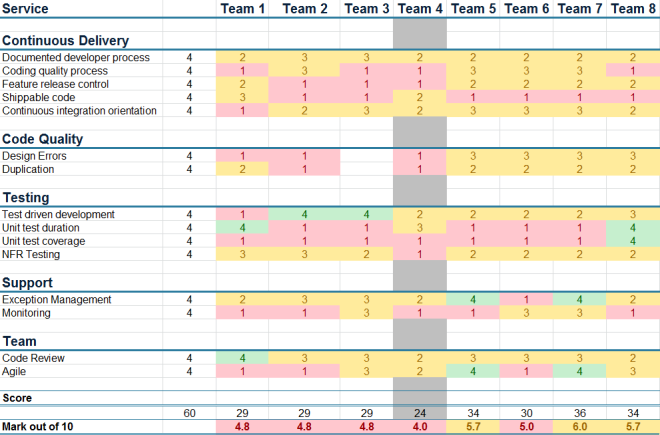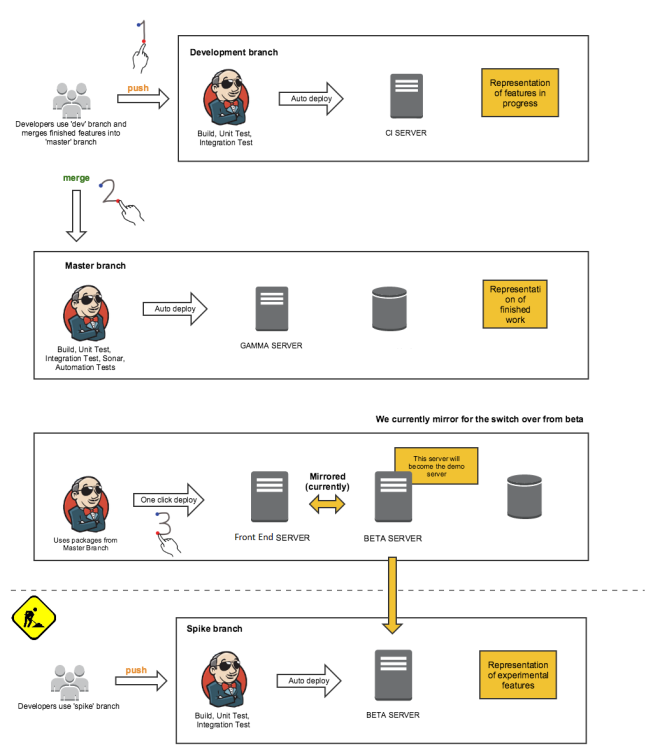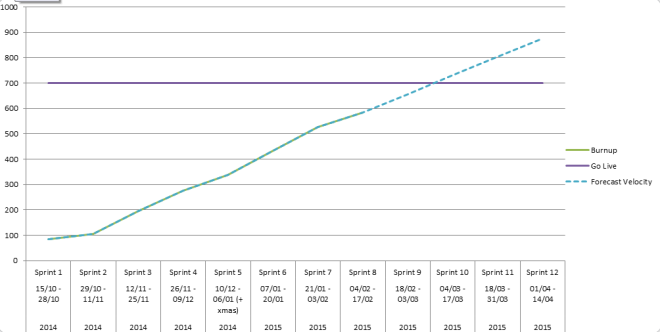How do you ensure that you recruit the right developers for you team? The interview process is important and focus should be on both technical skill and team fit:
A three stage approach is useful:
Stage 1: The pre-screen ensures that a basic technical level is achieved by the candidate and this can be undertaken by the recruitment agency and HR team.
Stage 2: The telephone interview gives the opportunity to delve deeper into the candidates technical knowledge and get a feel for how they define quality and ways of working.
Stage 3: The face to face interview should remove any doubts form the previous code exercises, give both parties an understanding of the expected ways of working and establish a good team fit.
Pre Screening
A Kata that the candidate can complete at home and submit for review was used to screen candidates. A Kata was selected from one of the many that can be found on the internet. The Kata below is an example Kata that could be used:
The String Calculator Kata
Try not to read ahead, Do one task at a time
Make sure you only test for correct inputs. there is no need to test for invalid inputs for this kata
String Calculator
- Create a simple String calculator with a method int Add(string numbers) The method can take 0, 1 or 2 numbers, and will return their sum (for an empty string it will return 0) for example “” or “1” or “1,2”
- Start with the simplest test case of an empty string and move to 1 and two numbers
- Remember to solve things as simply as possible so that you force yourself to write tests you did not think about
- Remember to refactor after each passing test
- Allow the Add method to handle an unknown amount of numbers
- Allow the Add method to handle new lines between numbers (instead of commas).
- The following input is ok: “1\n2,3” (will equal 6)
- The following input is NOT ok: “1,\n” (not need to prove it – just clarifying)
- Support different delimiters
- To change a delimiter, the beginning of the string will contain a separate line that looks like this: “//[delimiter]\n[numbers…]” for example “//;\n1;2” should return three where the default delimiter is ‘;’ . The first line is optional. all existing scenarios should still be supported
- Calling Add with a negative number will throw an exception “negatives not allowed” – and the negative that was passed.if there are multiple negatives, show all of them in the exception message
- Numbers bigger than 1000 should be ignored, so adding 2 + 1001 = 2
- Delimiters can be of any length with the following format: “//[delimiter]\n” for example: “//[***]\n1***2***3” should return 6
- Allow multiple delimiters like this: “//[delim1][delim2]\n” for example “//[*][%]\n1*2%3” should return 6.
- make sure you can also handle multiple delimiters with length longer than one char
Knockout criteria and expectations for success should be established for the interviewers in advance to ensure each candidate is reviewed against the same baseline. Success in the Kata leeds to a two stage interview process; a telephone interview and a face to face interview.
Telephone Interview
The telephone interview is used to gain an understanding of the way the candidate thinks. Comprising of a collaboration coding exercise on a shared open source platform like http://collabedit.com/ and aptitude questions (ideas on achieving code quality, opinions of BDD/TDD, how to achieve Continuous Integration/Continuous delivery, software patterns, SOLID Principles, etc.)
Code Exercise:
The face to face interview should give you an idea of whether you will be able to work with the candidate, do they ‘fit’. Ask questions around your work ethic, their attitude to criticism (Both about their work and the work of others), how they would start work with the team, their understanding of the delivery environment. A conceptual code exercises can also be helpful, try a whiteboard session. Coding without an IDL can indicate a candidates ability to conceptualize and think through a problem without using ‘quick tools’. A code exercise with an IDL is useful for indicating how quickly the candidate can come to terms with a new problem in a real world situation.
Whiteboard session;






